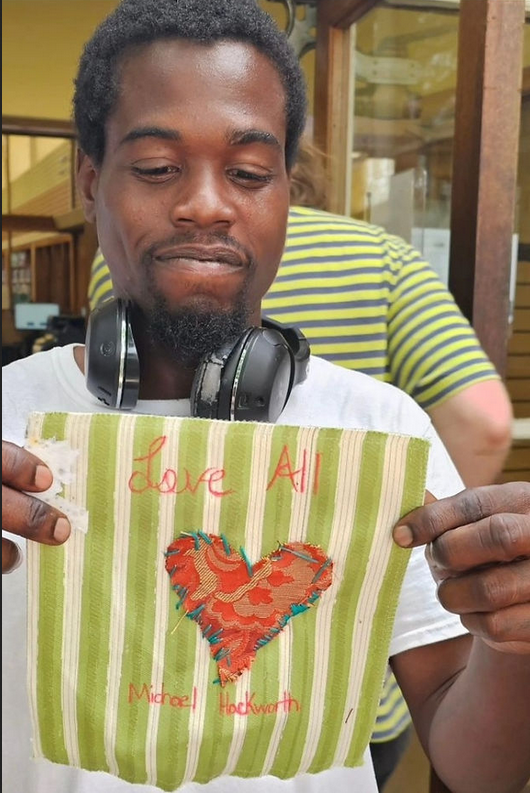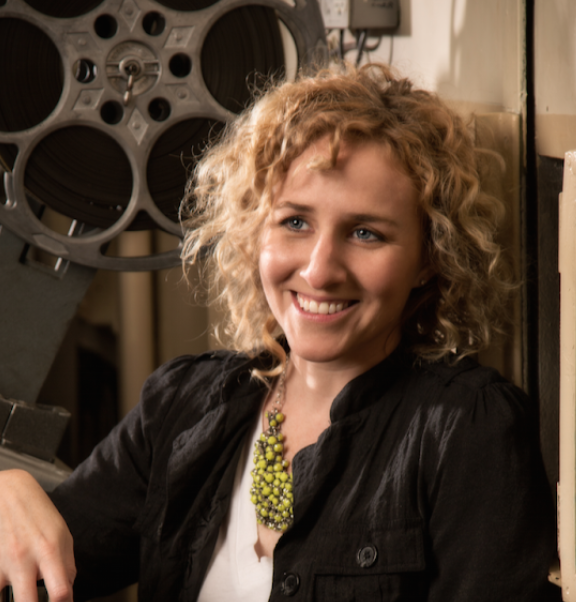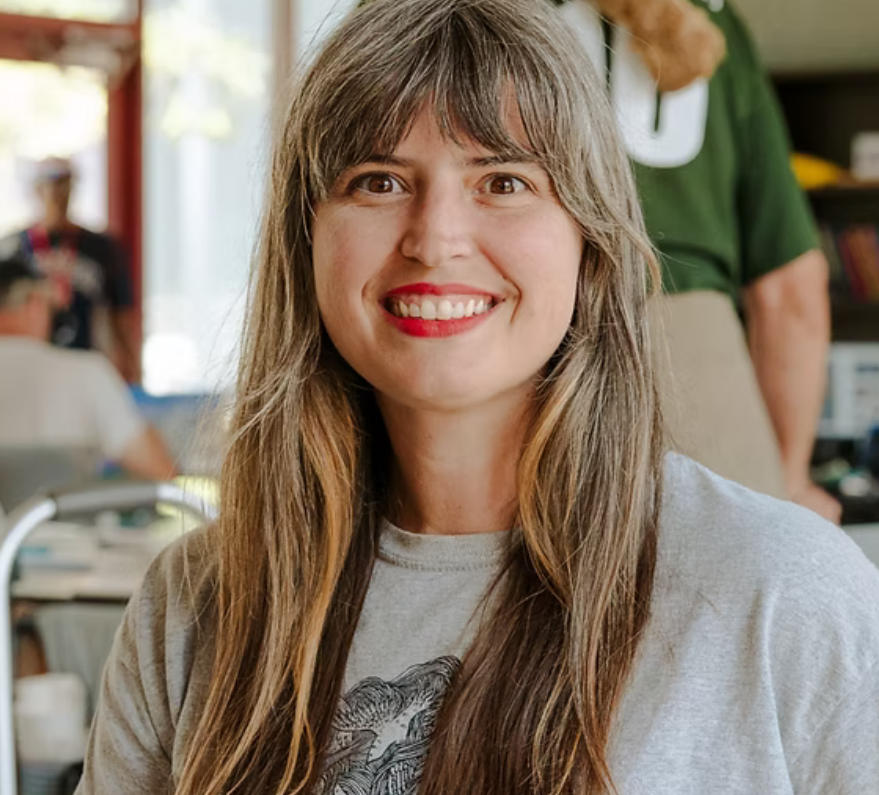Culture
Federal Arts Funding Cuts Hamper Birmingham-Area Events, Programs

Donate today to help Birmingham stay informed.
At least two Birmingham-area nonprofits have lost funding through the Trump administration’s cancellation of National Endowment for the Arts grants. A third organization’s grant is under review, and arts community leaders expect NEA funding cuts to trickle down, affecting a host of programs and events.
Sidewalk Film Center + Cinema and InToto Creative Arts are among hundreds of arts groups across the country that were notified their grants had been revoked after President Trump on Friday recommended eliminating the National Endowment for the Arts from the federal budget.
In Birmingham, the cuts will impact Alabama’s largest film festival, arts programming for adults experiencing homelessness and possibly other programs and events, including a project to memorialize lynching victims in Jefferson County.
“We want our community to know that this funding rescission affects real people in our city,” said Dani Parmar, executive director of InToto Creative Arts, which provides programming for those experiencing social and economic hardship. “These folks are our neighbors, and they are going through some of the most difficult things life can throw at you but are working hard to rebuild their lives and move towards stability.”
InToto lost a $10,000 NEA grant that was supposed to support programs and public presentations of participants’ work. “These are not just art classes; they are lifelines,” Parmar said.

Organizers of Sidewalk Film Festival, an annual event that typically screens more than 200 films and draws about 15,000 people from across the country, planned to use its $25,000 NEA grant to assist filmmakers with travel and lodging costs so they could participate in question-and-answer sessions and panel discussions, said Chloe Cook, executive director of Sidewalk Film Center + Cinema.
“That gives the audience the opportunity to not only ask questions about the filmmaking process but also to learn more about the story,” Cook said. “What drew that particular filmmaker to telling the story that they’ve chosen to tell? We find this to be incredibly beneficial for audiences, in particular when we’re dealing with a documentary film.”
Bringing filmmakers to the festival also gives local filmmakers an opportunity to network with their peers from across the country and world, she continued.
“That oftentimes leads to additional work for those local filmmakers,” Cook said. “They meet people that they connect with and want to help them tell their next story; or that filmmaker that’s visiting really likes the story of a local filmmaker, and they want to help them tell their next story. So having them here for that is really beneficial from an economic-development and career-development standpoint.”
Visiting filmmakers also lead workshops, classes and other educational programs that organizers schedule around the festival.
The Jefferson County Memorial Quilt Project had been awarded a $30,000 grant, but that project is currently listed as “under review” in the NEA portal, according to Jessica Moody, chief operations and impact officer for Create Birmingham.
“We haven’t gotten a notice that it is gone yet, but we don’t feel positive about it,” Moody said.
Create Birmingham is leading that project in partnership with the Jefferson County Memorial, Bib & Tucker Sew-Op, The Black Cherry Tree Project and the Birmingham Civil Rights Institute. The quilt project honors the 34 African Americans lynched in Jefferson County from the mid-19th century through the mid-20th century.
The project holds workshops in which community members create blocks for the quilt.
Final programming is set to happen in October, and Create Birmingham would submit a funding report in November and receive grant funds in December, unless the grant is canceled. But the organization is already paying artists and organizations to execute programming, Moody said.
An email sent notifying groups their grants had been rescinded includes a line saying recipients could appeal decisions within seven days, which InToto and Sidewalk are doing.
“There’s been a lot of chatter amongst arts professionals about whether or not this appeals process is going to be meaningful or if it is more theater, but we are appealing, and we hope to have a positive result,” Cook said.
Some Groups Already Received Grant Funds
Several arts groups that operate in the Birmingham area either already had received their NEA grant money before last week’s cuts or have not had their grants withdrawn.
Sloss Furnaces is one of the latter. It has been awarded a $25,000 NEA grant to fund its Summer Youth Apprenticeship, which is an eight-week program for local high school students to learn art-based blacksmithing, welding, mold making, casting and such while being paid an hourly wage, said Virginia Elliot, head of the Metal Arts Program. She said Sloss has received no notification of its grant being in danger.
The Alabama Symphony Orchestra already had received the $40,000 in grant money it was awarded this year, said Vice President of Development Anna Newsome.
“But we’re not confident about support in the future. That’s clear,” she said.
The Alabama Dance Council also already has received the $30,000 awarded it by NEA to provide programs in the Birmingham area and across the state, many of them educational programs. But Executive Director Kerri-Noelle Humphrey said she does not have high hopes for the grant application the group currently has in for the next funding cycle.
She said her group is making adjustments to its budgets and is talking with supporters and other organizations about what the path forward looks like for arts groups.
The Greater Birmingham Arts Education Collaborative also received a $25,000 NEA grant award. Officials with that group could not be reached for comment.
Reasoning for Cuts
The email canceling grants states that the NEA is updating its grantmaking policy to focus funding on the nation’s artistic heritage and creativity as prioritized by President Trump.
“Consequently, we are terminating awards that fall outside these new priorities,” the email reads.
Trump’s priorities, according to the email, are: “Projects that elevate the Nation’s HBCUs and Hispanic Serving Institutions, celebrate the 250th anniversary of American independence, foster AI competency, empower houses of worship to serve communities, assist with disaster recovery, foster skilled trade jobs, make America healthy again, support the military and veterans, support Tribal communities, make the District of Columbia safe and beautiful, and support the economic development of Asian American communities.”

Cook said the language NEA uses suggests programs the endowment has funded in the past are no longer in line with the administration’s agenda.
“The NEA is a very well-respected institution that has developed a highly competitive grants process over many, many years, and those grants have funded some incredible work, and to hear that our federal government no longer believes that type of work is important or crucial to our country is really concerning to me,” Cook said.
Moody said it’s stressful for any nonprofit to feel it has to bend over backward to meet the needs of a particular administration to get funding. She said she does not know of any other administration that has made such demands, and Cook said she isn’t aware of any time when NEA funding was revoked.
“If the message that we had received was something along the lines of, ‘Our federal government no longer has the means to ensure that everyone is fed and provided with health care, and, as a result, we’re going to be trimming back funding for the arts and humanities, I would find that distressing but somewhat understandable,” Cook said. “But that isn’t the message that we received.”
Moody said eliminating or defunding the NEA would be incredibly detrimental to organizations and communities. “The NEA funds all sorts of large and small grants, arts projects, cross-community collaboration grants,” she said. “The creative economy is a huge economic driver.”
She said Create Birmingham expects that a fair amount of the funding the NEA was slated to inject into Alabama in 2025 is now gone.
Founded in 1965, the National Endowment for the Arts is the nation’s largest art funder. Its budget accounts for 0.003% of the total federal budget, according to an NEA fact sheet. It’s 2024 appropriation was $207 million.
The Trump administration’s 2026 Discretionary Budget Request calls for eliminating or completely defunding the NEA, which would require a vote of Congress, along with several other small agencies, including the National Endowment for the Humanities and the Institute of Museum and Library Services.
Trickle-Down and Compounding Effects
Because a percentage of the Alabama State Council on the Arts’ budget is funded by the NEA and the arts council provides many grants, NEA elimination or defunding would cause widespread effects across Alabama, Cook said.
She said Sidewalk has received state arts council grants for its festival and educational programs. The NEA grant InToto Creative Arts lost was its first, Parmar said, but the organization has received indirect NEA funding in the past.
“We have benefited heavily from NEA trickle-down funding via subgrants with local and state agencies including Alabama State Council on the Arts, Mid America Arts Alliance and Alabama Arts Alliance,” Parmar said.
Newsome, of the symphony, said her group has many diverse sources for funding and is not overly reliant on the NEA. But she said cuts to the agencies that make the grants affect local organizations, which then have to go to supporters to replace that funding, and there are only so many sources for arts funding.
“We’re all interconnected,” she said. “It also demands more support from the community, any effect to that pool affects everyone.”
Cook and Parmar said their organizations are already working to make up for NEA-grant losses.

“The loss of this funding has created significant strain on our organization,” Parmar said. “We rely heavily on grant funding to provide our impactful programming, and we definitely created our budget for this year with the assumption that the award would be granted.”
After the grant was revoked, InToto decided to delay the hiring of personnel, she said, adding that the organization will be leaning on the community for support, seeking event sponsorships for its Sept. 9 “Our Voices” community arts showcase and launching a recurring donor program.
Moody with Create Birmingham, which raises and distributes funds to support artists and the creative industry, said corporate funding – a major alternative to grant funding – is thinning, perhaps because of the economic outlook. She also worries corporations are going to change their funding priorities based on the political landscape.
Moody pointed out that many creative organizations also have been negatively affected by the Alabama Humanities Alliance’s decision to stop grantmaking due to its loss of National Endowment for the Humanities funding.
She said much of the arts programming and events around Birmingham are very low cost to attendees because of grant support. To continue having low-cost entertainment, it appears the community will have to step up by donating, attending events and buying merchandise from arts groups, Moody said.
“A lot of people think I’m not a donor because I can’t give $1,000 to an organization, but your $5, $10 donations mean a lot,” Moody said. “A lot of people have $5 and $10. Not a lot of people have $10,000.
“I think that the community is going to start rallying around the places they want to succeed. And I think people need to act before things disappear.”
Cook encourages people to figure out what groups in their community are doing work they find meaningful and support those organizations. “If what they’re into is art therapy, there are a bunch of nonprofits that do that kind of work,” she said. “If what they’re into is local music, there are a ton of nonprofits that do that kind of work.”
Cook also suggests thinking broadly about what the arts mean.
“We’re all really patrons of the arts by living every day in a house designed by an architect,” she said. “The signage outside of the restaurant that you like – an artist likely made that signage. Art impacts everything that we do in every facet of our lives.”
Virginia Martin contributed to this report.


